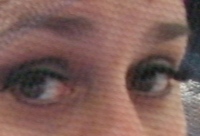Punctuating Side Comments: Comma, Em Dash, and Parentheses
You probably know you should set off parenthetical expressions with a comma, as in this example:
The dominatrix, a silver fox in a leather dress, kicked me and told me to beg for more.
But what about parentheses? It’s called a parenthetical expression after all! Can we set off the same parenthetical expression within parentheses? And what about dashes? What’s the difference?
Sure, you could go ahead and use parentheses or dashes in the example above. It would look like this:
The dominatrix–a silver fox in a leather dress–kicked me and told me to beg for more.
The dominatrix (a silver fox in a leather dress) kicked me and told me to beg for more.
But it wouldn’t be quite right. Commas, parentheses, and em dashes each have their particular meanings.
Use comma to set off a parenthetical expression that requires only a slight break, That is, the parenthetical expression flows well as part of the greater sentence, as in our original example.
The dominatrix, a silver fox in a leather dress, kicked me and told me to beg for more.
Use em dash to set off a parenthetical expression that requires a strong break because it amplifies or explains something or because it is sudden:
The dominatrix–indicating her dominance with a whip and spiked heels–kicked me and told me to beg for more.
Use parentheses to set off a parenthetical expression that requires a strong break and is not as closely related to the rest of the sentence:
The dominatrix (we’d seen her here before dressed as a slave) kicked me and told me to beg for more.
You can use all of these punctuation marks to set apart parenthetical expressions in your writing. Ask yourself, does this expression flow with the rest of the sentence? (Use comma.) Does it add sudden amplification? (Use em dash.) Or is it not very closely related to the rest of the sentence? (Use parentheses.)
The Sexy Grammarian offers Free Sexy Grammar Lessons as well as Private Sessions, Custom Edits, and Intimate Workshops for all kinds of writers. Get a Free Private Session today and watch your writing project explode!




